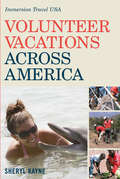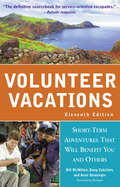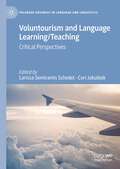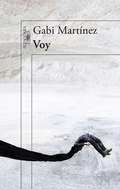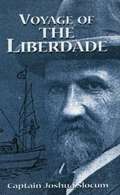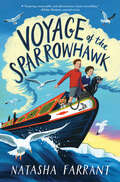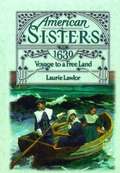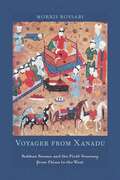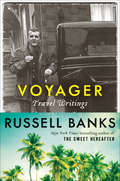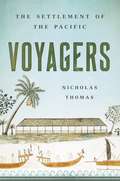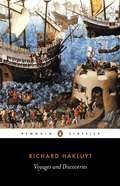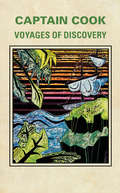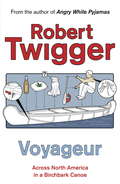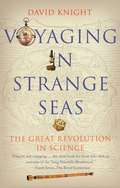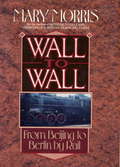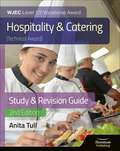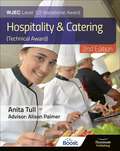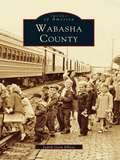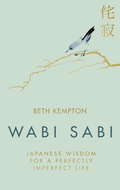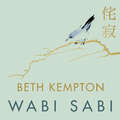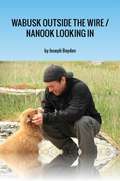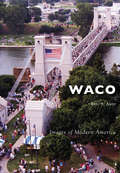- Table View
- List View
Volunteer Vacations Across America: Immersion Travel USA
by Sheryl KayneThe second book in the Immersion Travel USA series offers a one-of-a-kind examination of volunteer immersion opportunities throughout the US. Volunteer immersion means grounding oneself completely in the place, the tasks, and the people you meet along the way, while keeping your own goals in mind. Kayne profiles over 200 volunteer programs throughout the U.S., highlighting the personal stories of volunteers, and offering essential logistical information on the programs. Volunteer Vacations includes trips appropriate for families, children, teens, and senior citizens, and profiles opportunities over a wide range of categories, including community outreach, wildlife conservancy, environmental advocacy, national parks, education groups, and scientific research.
Volunteer Vacations: Short-Term Adventures That Will Benefit You and Others
by Bill Mcmillon Doug Cutchins Anne Geissinger Ed AsnerFor the increasing number of people looking for ways to make a difference while on vacation, this fully updated edition is filled with in-depth information to get them ready for their adventure, including contacts, locations, costs, dates, project details, and profiles of 150 select organizations running thousands of programs in the United States and around the world. Including new details about long-term projects and organizations specifically tailored for families, seniors, and the disabled, this definitive sourcebook provides a wealth of opportunities for anyone interested in taking a truly meaningful vacation and provides new anecdotes about all kinds of jobs and the positive impact they had on volunteers' lives.
Voluntourism and Language Learning/Teaching: Critical Perspectives (Palgrave Advances in Language and Linguistics)
by Larissa Semiramis Schedel Cori JakubiakThis edited volume extends current voluntourism theorizing by critically examining the intersections among various forms of work-leisure travel and language learning/teaching. The book’s contributors investigate volunteer tourism and its cognates such as working holidaymaking, international internships, and gap year labor, as discursive fields in which powerful ideas about language(s), their speakers, and pedagogical practices are propagated worldwide. The various authors’ chapters shed light on the hegemony of global English, the social consequences of linguistic commodification and neoliberal rationalities, the ways in which speaker identity positions can alter the exchange value of languages, and how language competencies are tied to power in the labor market, among related topics. This volume will be of interest to readers in Applied Linguistics, Critical Sociolinguistics, Educational and Linguistic Anthropology, Tourism and Leisure Studies, Migration and Mobility Studies, and Language Teaching and Learning.
Voy
by Gabi MartínezLiteratura de viajes, nuevo periodismo, autoficción, parodia y metaliteratura en el nuevo libro de Gabi Martínez. «El convencimiento de estar donde debes y quieres es una de las grandes experiencias de la vida. Sentí que había llegado a un lugar que de alguna manera buscaba desde hacía mucho. Encontrar un lugar es bueno. Sí, es bueno.» Un joven periodista intenta localizar a Gabi Martínez, el escritor desaparecido en Nueva Zelanda cuando seguía la pista de un ave invisible tan real, o tan imaginaria, como las leyendas que la nombran. El reportero necesita entender qué motivos le llevaron a romper con su vida y desaparecer sin dejar rastro. Como hizo su propio padre, como ocurre con todos aquellos que no creen pertenecer a ningún lugar, los que se marchan mucho antes de emprender un viaje. Pero nunca existe una única versión de la historia. Por eso, la figura del viajero se va componiendo a medida que avanza la investigación, y las voces de su exmujer, alguno de sus amigos, varios guías de sus expediciones, compañeros de viaje o una de sus últimas amantes van perfilando al hombre en esencia, tan mezquino como espléndido, a medida que responden a las preguntas del periodista. No hay sólo una perspectiva, sino tantas como personas compartieron su vida. De la misma manera, Voy no es un único libro sino varios al tiempo. Es ficción, pero también literatura de viajes; es un relato de anhelos, pero también de desengaños; es comedia y a la vez drama. Una obra caleidoscópica que profundiza en el descubrimiento del yo a través de los otros, en la identidad como juego de espejos y en la utopía como final del viaje. Reseñas:«Desnudo literario integral que ve y sube la apuesta autoficcional de Coetzee en Verano.» Daniel Arjona, El Mundo «Un libro que se sale de lo común. Impecable e implacable. Un libro de búsquedas y sueños,de risas y quebrantos, de radical exploración personal a través del espejo que habitan los otros.» Tino Pertierra, La Nueva España «Deslumbrante (e impúdico) cruce entre el making of literario y la autobiografía. Imprescindible.» Jorge de Cominges, escritor «Gabi Martínez es un escritor de viajes introspectivo que encierra un pequeño Homero dentro mucho más revolucionario que en otros escritores. Ha sabido encontrar la manera de renovar la literatura viajera mediante enfoques inusuales, dejándose llevar por la misma osadía -y lucidez- que tuvo su precedente más claro y confeso: Bruce Chatwin, con quien comparte la capacidad de ruptura y de recreación. Literatura en vena.» Adolfo García Ortega, escritor, crítico y traductor, Club Cultura FNAC «Amplía el campo de acción del Verano de Coetzee (...) Me quito el sombrero: debe tenerse libertad y valentía para hacer un libro como éste. Da fuerza.» Mercè Ibarz, escritora «Martínez dista mucho de ser un escritor de viajes al uso y de manual (...). Podemos disfrutar de su originalidad, de un soberbio estilo de escritura y de muchas reflexiones sagaces de quien ha recorrido mundo y sabe de lo que habla. (...) Auténtico e intenso porque también en la vida, como demuestra Gabi en este libro, no debemos conformarnos con hacer turismo en los demás y en nosotros mismos.» Ángeles Prieto, La tormenta en un vaso «Una obra maestra.» La petita llibreria
Voyage of the Liberdade
by Joshua SlocumIn 1890, the author became the first person to circumnavigate the globe alone. This is the account of one of his lesser-known but no less remarkable sea journeys. From the Publisher: Great 19th-century mariner's thrilling, account of the wreck of his ship off the coast of South America, the 35-foot brave little craft he built from the wreckage, and its remarkable, danger-fraught voyage home. A 19th-century maritime classic brimming with courage, ingenuity, and daring. Easy-to-read and fast-paced.
Voyage of the Sparrowhawk
by Natasha FarrantFrom a beloved middle grade author: a propulsive seafaring adventure in search of loved ones and a place to call home. In the aftermath of World War One, everyone in the small town of Barton is rebuilding their lives. Ben needs to find his brother, Sam—who was wounded in action and is now missing—if he wants to avoid being sent to the orphanage. Lotti’s horrible aunt and uncle want to send her away from her beloved home to boarding school, just when she has successfully managed to get expelled from her last one. When a chance encounter brings the two children together, each recognizes the other as a kindred spirit. But just as they’ve found their feet, disaster strikes, and Ben and Lotti must run away. They hatch a plan to cross the English Channel on Ben’s narrowboat, the Sparrowhawk, and track down Sam in France. But there’s something in France that Lotti is looking for, too. . . . Funny, heartwarming, and wise, Voyage of the Sparrowhawk is full of high stakes, twists and connections, and—most of all—adventure.
Voyage to a Free Land 1630 (American Sisters)
by Laurie LawlorAbigail Garrett and her older sister, Hannah, leave their home in England to board a ship bound for the New World and freedom from religious persecution. By the time they reach their destination, the two girls have weathered a difficult journey and become friends.
Voyager From Xanadu: Rabban Sauma And The First Journey From China To The West
by Morris RossabiToward the end of the thirteenth century, at about the time Marco Polo was being received by the great Khubilai Khan, a Nestorian Christian monk from China called Rabban Sauma was making the reverse journey from the Mongol capital (what is now Beijing) to Jerusalem. Upon reaching Baghdad―the first traveler to arrive from China―Sauma learned that his pilgrimage could not be fulfilled because of Islamic control of the Holy Land. In Voyager from Xanadu, Morris Rossabi traces Sauma’s trans-Eurasian travels against the turbulent era of the Mongol Empire and the last Crusades. His indispensable book provides a unique first-hand Asian perspective on Europe and illuminates a crucial period in the early history of global, diplomatic, and commercial networking.
Voyager: Travel Writings
by Russell BanksThe acclaimed, award-winning novelist takes us on some of his most memorable journeys in this revelatory collection of travel essays that spans the globe, from the Caribbean to Scotland to the HimalayasNow in his mid-seventies, Russell Banks has indulged his wanderlust for more than half a century. In this compelling anthology, he writes that since childhood he has "longed for escape, for rejuvenation, for wealth untold, for erotic and narcotic and sybaritic fresh starts, for high romance, mystery, and intrigue." The longing for escape has taken him from the "bright green islands and turquoise seas" of the Caribbean islands to peaks in the Himalayas, the Andes, and beyond. In Voyager, Russell Banks, a lifelong explorer, shares highlights from his travels: interviewing Fidel Castro in Cuba; motoring to a hippie reunion with college friends in Chapel Hill, North Carolina; eloping to Edinburgh to marry his fourth wife, Chase; driving a sunset-orange metallic Hummer down Alaska's Seward Highway. In each of these remarkable essays, Banks considers his life and the world. In Everglades National Park, he traces his own timeline: "I keep going back, and with increasing clarity I see more of the place and more of my past selves. And more of the past of the planet as well." Recalling his trips to the Caribbean in the title essay, "Voyager," Banks dissects his relationships with the four women who would become his wives. In the Himalayas, he embarks on a different quest of self-discovery. "One climbs a mountain, not to conquer it, but to be lifted like this away from the earth up into the sky," he explains. Pensive, frank, beautiful, and engaging, Voyager brings together the social, the personal, and the historical, opening a path into the heart and soul of this revered writer."If the United States were to adopt Japan's admirable policy of designating a few extraordinary individuals as Living National Treasures, Russell Banks would be my first nomination."--Michael Cunningham"Russell Banks is a writer in the grand tradition. It is quite natural, in speaking of Banks's great works of fiction, to think of such predecessors as Conrad, Tolstoy, and Chekhov--and closer to his American home, such predecessors as Jack London, Theodore Dreiser, Hemingway, Dos Passos, Faulkner, and Nelson Algren. He has acquired an international reputation for the intensely wrought, uncompromising, and intransigent moral vision that has suffused virtually all of his work. He has created art of a kind that speaks to all classes, not merely to the elite, and yet has done so scrupulously and thoughtfully."--Joyce Carol Oates
Voyagers: The Settlement of the Pacific
by Nicholas ThomasAn award-winning scholar explores the sixty-thousand-year history of the Pacific islands in this dazzling, deeply researched account. The islands of Polynesia, Melanesia, and Micronesia stretch across a huge expanse of ocean and encompass a multitude of different peoples. Starting with Captain James Cook, the earliest European explorers to visit the Pacific were astounded and perplexed to find populations thriving thousands of miles from continents. Who were these people? From where did they come? And how were they able to reach islands dispersed over such vast tracts of ocean?In Voyagers, the distinguished anthropologist Nicholas Thomas charts the course of the seaborne migrations that populated the islands between Asia and the Americas from late prehistory onward. Drawing on the latest research, including insights gained from genetics, linguistics, and archaeology, Thomas provides a dazzling account of these long-distance migrations, the seagoing technologies that enabled them, and the societies they left in their wake.
Voyages and Discoveries: Northeastern Europe, And Adjacent Countries
by Richard HakluytRenaissance diplomat and part-time spy, William Hakluyt was also England's first serious geographer, gathering together a wealth of accounts about the wide-ranging travels and discoveries of the sixteenth-century English. One of the epics of this great period of expansion, The Principal Navigations, Voyages, Traffiques and Discoveries of the English Nation describes, in the words of the explorers themselves, an astonishing era in which the English grew rapidly aware of the sheer size and strangeness of their world. Mingling accounts of the journeys of renowned adventurers such as Drake and Frobisher with descriptions by other explorers and traders to reveal a nation beginning to dominate the seas, Hakluyt's great work was originally intended principally to assist navigation and trade. It also presents one of the first and greatest modern portraits of the globe.
Voyages of Discovery
by Captain James Cook Robert WelschBetween 1768 and 1779, Captain James Cook of the British Royal Navy made three voyages of exploration for purposes of scientific research. On each voyage he kept a log of scenes and adventures. Cook's reputation rose steadily with each voyage largely because Europeans were fascinated with the romance of discovery as well as reports of sexual licence in Tahiti and other Polynesian islands.
Voyageur: Across the Rocky Mountains in a Birchbark Canoe
by Robert TwiggerBest-selling author of Angry White Pyjamas travels across the Rocky Mountains by canoeFifteen years before Lewis and Clark, Scotsman Alexander Mackenzie, looking to open up a trade route, set out from Lake Athabasca in central Northern Canada in search of the Pacific Ocean. Mackenzie travelled by bark canoe and had a cache of rum and a crew of Canadian voyageurs, hard-living backwoodsmen, for company. Two centuries later, Robert Twigger decides to follow in Mackenzie's wake. He too travels the traditional way, having painstakingly built a canoe from birchbark sewn together with pine roots, and assembled a crew made up of fellow travelers, ex-tree-planters and a former sailor from the US Navy. Several had tried before them but they were the first people to successfully complete Mackenzie's diabolical route over the Rockies in a birchbark canoe since 1793. Their journey takes them to the remotest parts of the wilderness, through Native American reservations, over mountains, through rapids and across lakes, meeting descendants of Mackenzie and unhinged Canadian trappers, running out of food, getting lost and miraculously found again, disfigured for life (the ex-sailor loses his thumb), bears brown and black, docile and grizzly.
Voyageur: Across the Rocky Mountains in a Birchbark Canoe
by Robert TwiggerBest-selling author of Angry White Pyjamas travels across the Rocky Mountains by canoeFifteen years before Lewis and Clark, Scotsman Alexander Mackenzie, looking to open up a trade route, set out from Lake Athabasca in central Northern Canada in search of the Pacific Ocean. Mackenzie travelled by bark canoe and had a cache of rum and a crew of Canadian voyageurs, hard-living backwoodsmen, for company. Two centuries later, Robert Twigger decides to follow in Mackenzie's wake. He too travels the traditional way, having painstakingly built a canoe from birchbark sewn together with pine roots, and assembled a crew made up of fellow travelers, ex-tree-planters and a former sailor from the US Navy. Several had tried before them but they were the first people to successfully complete Mackenzie's diabolical route over the Rockies in a birchbark canoe since 1793. Their journey takes them to the remotest parts of the wilderness, through Native American reservations, over mountains, through rapids and across lakes, meeting descendants of Mackenzie and unhinged Canadian trappers, running out of food, getting lost and miraculously found again, disfigured for life (the ex-sailor loses his thumb), bears brown and black, docile and grizzly.
Voyaging in Strange Seas
by David KnightIn 1492 Columbus set out across the Atlantic; in 1776 American colonists declared their independence. Between these two events old authorities collapsed--Luther's Reformation divided churches, and various discoveries revealed the ignorance of the ancient Greeks and Romans. A new, empirical worldview had arrived, focusing now on observation, experiment, and mathematical reasoning. This engaging book takes us along on the great voyage of discovery that ushered in the modern age. David Knight, a distinguished historian of science, locates the Scientific Revolution in the great era of global oceanic voyages, which became both a spur to and a metaphor for scientific discovery. He introduces the well-known heroes of the story (Galileo, Newton, Linnaeus) as well as lesser-recognized officers of scientific societies, printers and booksellers who turned scientific discovery into public knowledge, and editors who invented the scientific journal. Knight looks at a striking array of topics, from better maps to more accurate clocks, from a boom in printing to medical advancements. He portrays science and religion as engaged with each other rather than in constant conflict; in fact, science was often perceived as a way to uncover and celebrate God's mysteries and laws. Populated with interesting characters, enriched with fascinating anecdotes, and built upon an acute understanding of the era, this book tells a story as thrilling as any in human history.
WALL TO WALL
by Mary MorrisA happy addition to the rich Penguin Travel Library series. Morris (Nothing to Declare) brings wit and her charmingly articulate style to an independent trip through the largest land mass. Annotation c. by Book News, Inc. , Portland, Or.
WJEC Level 1/2 Vocational Award Hospitality and Catering (Technical Award) Study & Revision Guide – Revised Edition: (technical Award) Study And Revision Guide - Revised Edition
by Anita TullThis practical Study and Revision Guide has been completely revised and updated to match the new Hospitality and Catering Level 1/2 (Technical Award) specification, for first teaching from September 2022. Written by renowned author Anita Tull, it provides the essential information needed for the exam and will help students develop and apply the skills needed for the Controlled Assessment. The ideal companion to the Student Book! This guide is designed to be used as a textbook for lower-ability students and a study aid and revision guide for higher-ability students.What's new in the 2nd Edition?- Structure and content fully updated to match the new specification precisely.- Completely new assessment sections in line with the new specification.- A new section on How to prepare and make dishes with examples of how different techniques are combined in recipes, together with new activities to help students identify skills and techniques in a range of dishes, helping prepare them for assessment.- Content re-organised under new specification Unit and Topic headings and numbering making it easy for students to follow.- New Specification stems signposting to clearly show students which sections of information they need to 'know'; 'know and understand'; 'be aware of' and 'be able to'.What have we retained from the previous edition?- Condensed version of the required theory presented in a clear and colourful study guide.- Interesting Activities throughout to allow students to consolidate and apply their learning.- Key terms to remind students of the essential terminology needed for assessment.- Accessible design with colourful diagrams, images, tables and charts to support understanding and knowledge recall, making it perfect for lower ability students.- In Unit 1, end of section 'Knowledge check' and Practice exam questions enable students to test themselves and provide plenty of practice for the assessment.- Unit 2 helps support students in applying the knowledge learned from Unit 1 and prepare for the Controlled Assessment, providing guidance for presenting evidence together with example answers and assessor commentary.- When used in conjunction with our bestselling Student Book, students will have an unrivalled suite of resources to help them excel with their study of Hospitality and Catering.
WJEC Level 1/2 Vocational Award Hospitality and Catering (Technical Award) – Student Book – Revised Edition: (technical Award) Study And Revision Guide - Revised Edition
by Anita Tull Alison PalmerThis best-selling Student Book has been completely revised and updated to match the new Hospitality and Catering Level 1/2 (Technical Award) specification, for first teaching from September 2022. Written by renowned author Anita Tull and reviewed by experienced teacher and examiner Alison Palmer, this engaging student book will support students through their Level 1/2 course. What's new in the 2nd Edition?- Structure and content fully updated to match the new specification precisely.- Completely new assessment sections in line with the new specification.- New content throughout, including extensive new material covering the additional skills and techniques now required for 2.3 Food preparation and cooking techniques.- Content re-organised under new specification Unit and Topic headings and numbering making it easy for students to follow.- New Specification stems signposting to clearly show students which sections of information they need to 'know'; 'know and understand'; 'be aware of' and 'be able to'.- Recipes and Commodities sections available for FREE online.What have we retained?- Language and design tailored to the learning needs of Level 1 and Level 2 students.- Visually stimulating layout to help ensure students engage with the content in a meaningful way, making it highly accessible for lower ability students.- Practical activities together with learning features such as `Put it into Practice' and `Scenarios' to help students translate their knowledge and understanding to the world of work.- Short and extended answer style questions throughout to help prepare students for assessment. - Stretch and challenge activities encourage students to work towards achieving a higher grade, making them particularly useful for higher ability students.- FREE suggested answers to Activities, end of topic Practice questions/Stretch and challenge activities from the new edition, available online.When used in conjunction with our bestselling Study and Revision Guide students will have an unrivalled suite of resources to help them excel with their study of Hospitality and Catering.
Wabasha County
by Judith Giem ElliotWabasha County captures the spirit of a region and its people through rare historic photographs, many of which are previously unpublished. A truly multicultural community, Wabasha County has been home to residents of Canadian, French, English, Irish, Native American, and German origin. The earliest known pioneers, Augustine Rocque and his family, became the first white people to occupy a year-round residence in Minnesota in 1826. Within these pages, discover the people and events that have shaped Wabasha County's history over the past 170 years. Wabasha County was named after the great chief Wabashaw II. Many aspects of Wabasha's heritage are featured here, including the dewakanton Band of the Dakotas, riverboats of the Mississippi, pioneers and their descendants, and buildings throughout the area. Author Judith Giem Elliott has produced a volume that truly reflects the value Wabasha County's residents place upon their rich and colorful history.
Wabi Sabi: Japanese Wisdom for a Perfectly Imperfect Life
by Beth Kempton'A truly transformative read' Sunday Times STYLE'More than ever, we need books like this' Jessica Seaton, Co-Founder of Toast and author of Gather, Cook, FeastA whole new way of looking at the world - and your life - inspired by centuries-old Japanese wisdom.Wabi sabi ("wah-bi sah-bi") is a captivating concept from Japanese aesthetics, which helps us to see beauty in imperfection, appreciate simplicity and accept the transient nature of all things. With roots in zen and the way of tea, the timeless wisdom of wabi sabi is more relevant than ever for modern life, as we search for new ways to approach life's challenges and seek meaning beyond materialism.Wabi sabi is a refreshing antidote to our fast-paced, consumption-driven world, which will encourage you to slow down, reconnect with nature, and be gentler on yourself. It will help you simplify everything, and concentrate on what really matters.From honouring the rhythm of the seasons to creating a welcoming home, from reframing failure to ageing with grace, wabi sabi will teach you to find more joy and inspiration throughout your perfectly imperfect life.This book is the definitive guide to applying the principles of wabi sabi to transform every area of your life, and finding happiness right where you are.
Wabi Sabi: Japanese Wisdom for a Perfectly Imperfect Life
by Beth Kempton'A truly transformative read' Sunday Times STYLE'More than ever, we need books like this' Jessica Seaton, Co-Founder of Toast and author of Gather, Cook, FeastA whole new way of looking at the world - and your life - inspired by centuries-old Japanese wisdom.Wabi sabi ("wah-bi sah-bi") is a captivating concept from Japanese aesthetics, which helps us to see beauty in imperfection, appreciate simplicity and accept the transient nature of all things. With roots in zen and the way of tea, the timeless wisdom of wabi sabi is more relevant than ever for modern life, as we search for new ways to approach life's challenges and seek meaning beyond materialism.Wabi sabi is a refreshing antidote to our fast-paced, consumption-driven world, which will encourage you to slow down, reconnect with nature, and be gentler on yourself. It will help you simplify everything, and concentrate on what really matters.From honouring the rhythm of the seasons to creating a welcoming home, from reframing failure to ageing with grace, wabi sabi will teach you to find more joy and inspiration throughout your perfectly imperfect life.This book is the definitive guide to applying the principles of wabi sabi to transform every area of your life, and finding happiness right where you are.
Wabusk Outside the Wire / Nanook Looking In: A Northwords Story (Northwords)
by Joseph Boyden"Wabusk Outside the Wire / Nanook Looking In" is Joseph Boyden's contribution to Northwords, a cross-platform project that takes urban Canadian writers to some of the world's most extreme environments. Introduced by award-winning journalist and radio personality Shelagh Rogers, Northwords is a collection of stories written by acclaimed Canadian authors as they experienced one of Canada’s most awe-inspiring northern national parks Torngat Mountains National Park, the country’s newest national park, and a place steeped in geological and human history. The cross-platform project, which includes a documentary film that follows the authors as they explored the harsh and stunning terrain, had adventures, and created these new works, adds to the continuing story of the North. The stories explore the idea of the North, and what happens when the country’s best writers tackle its most overwhelmingly beautiful places. Taking advantage of opportunities presented by transmedia integration, users can experience the stories in the writers’ own words through Anansi Digital, as well as learn more about their processes and what inspired them through interactive content. Users will have access to film and audio content, and together, these related media will create a larger story web, allowing the audience to truly immerse themselves in the sights, sounds, and stories of the North.
Waco (Images of Modern America)
by Eric AmesThe story of Waco's modern era starts with a disaster and ends with rebirth. In 1953, a record-setting tornado swept through the city's downtown, killing 114 people and destroying a century's worth of original buildings. From the devastation came an ambitious urban renewal project, an explosion in suburban developments, and several cycles of waning and revitalization in the downtown area. Baylor University's steady growth in academic excellence and national exposure kept the city on the map. The images in this book detail the milestones and memories of a proud city founded in the 1840s, and they highlight achievements both personal and civic.
